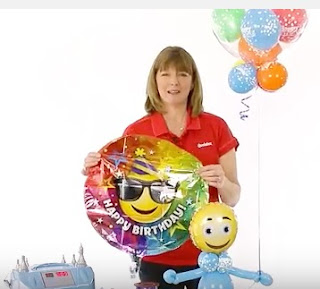Let's face it, when you are looking for balloons to add to your displays and see a set of six foil balloons being sold on the internet for a fraction of the price that your local supplier sells them for, it is very tempting to buy them... why not?
Are you currently selling counterfeit balloons without even realising it? Is this a serious matter that could land you in hot water?
As the owner of a balloon business, you strive to provide the best products and services to your customers. However, in an attempt to save costs or find cheaper alternatives, some entrepreneurs may be tempted to use counterfeit products. In this blog post, we will explore the dangers of counterfeit goods and shed light on the problems they can cause for your balloon business. Embracing the value of authenticity and quality will ensure the success and reputation of your company.
Compromised Quality and Safety: Counterfeit balloons and related supplies are typically manufactured using substandard materials and methods. Inferior quality balloons are prone to leaks, tears, or bursting, leading to disappointment for customers and potential safety hazards during events. When working with counterfeit products, you risk damaging your reputation and compromising the safety of those who interact with your balloons.Negative Impact on Customer Satisfaction: Your customers expect reliable and visually appealing balloons that elevate their celebrations. By using counterfeit products, you run the risk of failing to meet these expectations. Inferior balloons may not hold their shape, sometimes inflating to an unusual shape and when filled with helium, they may float up-side-down or worse still, not float at all, leaving customers dissatisfied and potentially ruining their events. Negative word-of-mouth can spread quickly, damaging your business's reputation and reducing future opportunities.
Legal Consequences and Reputational Damage: Using counterfeit products infringes on intellectual property rights, and it is illegal in most jurisdictions. If you're caught selling or using counterfeit balloons, you may face legal consequences, including hefty fines or even imprisonment. Moreover, associating your business with counterfeit goods tarnishes your reputation and undermines trust among customers and industry peers.
Adverse Environmental Impact: Counterfeit products are often produced with little regard for environmental sustainability. The use of substandard materials and unethical manufacturing practices can lead to increased waste generation and pollution. By supporting counterfeit products, you indirectly contribute to the negative impact on our environment, undermining your business's commitment to sustainability.
How do you know if you are buying a counterfeit balloon or related product?
Identifying counterfeit balloon-related products can be challenging, but there are several signs and precautions you can take to minimise the risk. Here are some ways to determine whether a product may be counterfeit:
- Purchase from reputable suppliers: Stick to well-known and trusted suppliers who have a solid reputation in the industry. Research their background, read customer reviews, and ensure they have appropriate certifications and licenses. If you are new to the industry, and are looking for reputable balloon suppliers, visit the manufacturers websites where you will find a world-wide distributor list.
- Price: If a deal seems too good to be true, it probably is. Counterfeit products are often priced significantly lower than authentic ones. Be cautious of unusually low prices as they may indicate poor quality or counterfeit goods.
- Packaging and labelling: Authentic products generally come with proper packaging and labelling, including clear branding, logos, product information, and safety instructions. Counterfeit items may have misspelled words, blurry images, or incorrect logos.
- Quality and appearance: Carefully inspect the product for any signs of inferior quality. Counterfeit balloons may have uneven seams, colour discrepancies, or unusual textures. Check for inconsistencies in size, shape, and printing quality, as well as any visible defects or damages.
- Authenticity holograms and marks: Some brands incorporate holograms, security seals, or other unique marks to distinguish their authentic products. Research the brand's authentication methods and compare them with the product you're considering purchasing.
- Seller reputation and location: Be cautious when purchasing from unfamiliar sellers, especially those based in regions known for producing counterfeit goods. Check if the seller has a physical address and reliable customer support. Avoid sellers with a history of selling counterfeit items.
- Trust your instincts: If something feels off or suspicious about the product or the seller, it's better to err on the side of caution and refrain from purchasing.
Remember, thorough research, reliance on trusted suppliers, and careful inspection are essential when making purchasing decisions. By staying vigilant, you can minimise the risk of buying counterfeit balloon-related products and ensure the success and safety of your balloon business.
Happy Ballooning!
Sue
Follow me @suebowler








.jpg)















